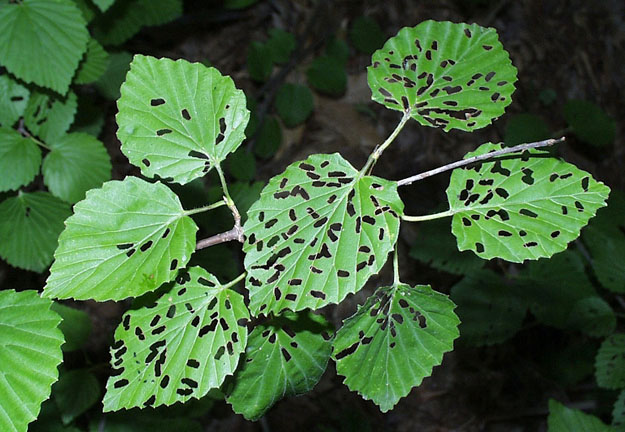
This week’s fossil is a departure from our usual set of marine invertebrate animals. Above is a leaf of Viburnum lesquereuxii from the Dakota Formation of Ellsworth County, Kansas. The rocks enclosing it are from the Upper Cretaceous Cenomanian Stage, roughly 93-99 million years old. The leaf is preserved as a carbonized film in excellent detail.
What is cool about this particular leaf is that it has damage from insects that fed on the softer tissues between the veins. These feeding trace fossils are distinguished by smooth edges around the circular holes where the plant grew to seal off the torn cells. The leaf-eating insects may have been beetles or some kind of caterpillars. Viburnum is a common and diverse group of plants today, and they still experience significant insect herbivory, as shown below.

Beetles chewing holes in a modern Viburnum (http://www.maine.gov/agriculture/pesticides/gotpests/bugs/vib-leaf-beetle.htm).
Viburnum is a flowering plant, an angiosperm. This group appeared in the earliest Cretaceous (about 140 million years ago) and started a rapid rise to dominance just about the time this fossil leaf and its insect pests were alive. This little ecological vignette gives us an insight into the early days of our modern flora.



Pingback: Royal Society Te Apārangi, Wellington Branch | A Quick Look at the Cretaceous World